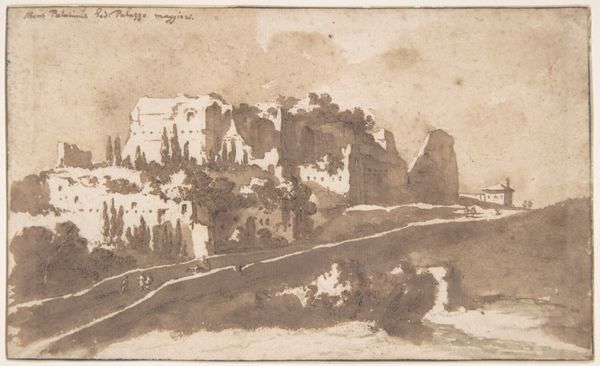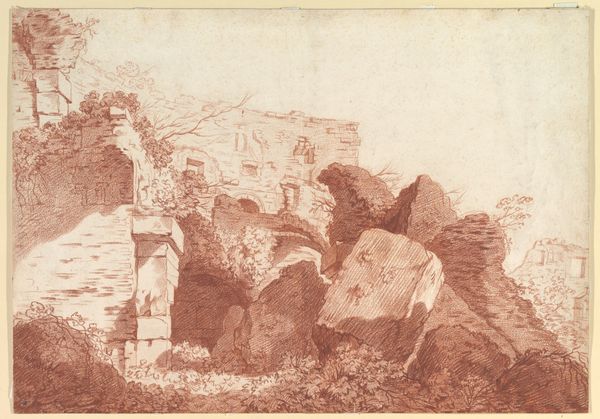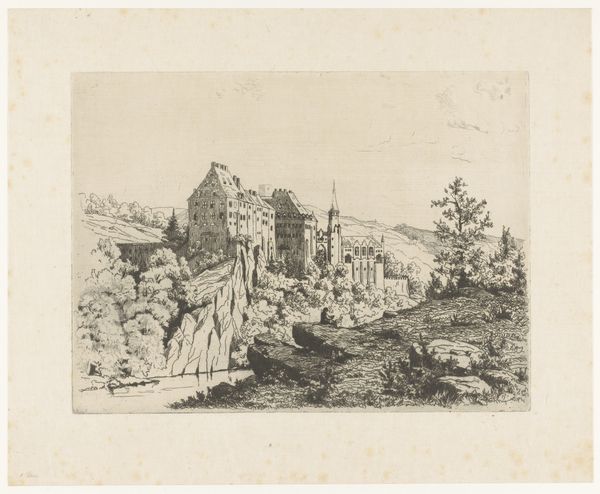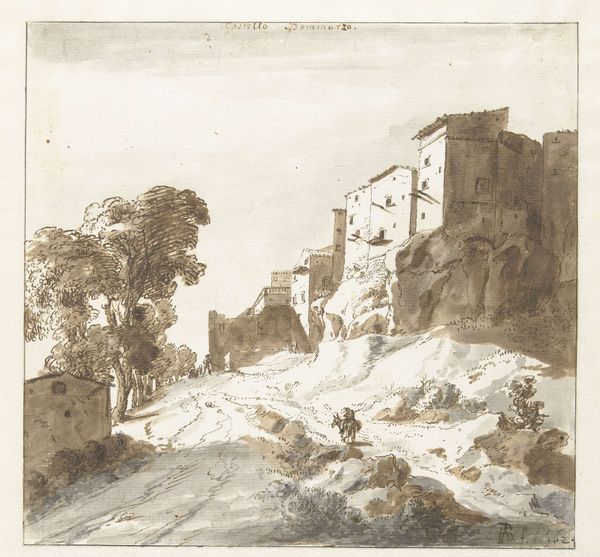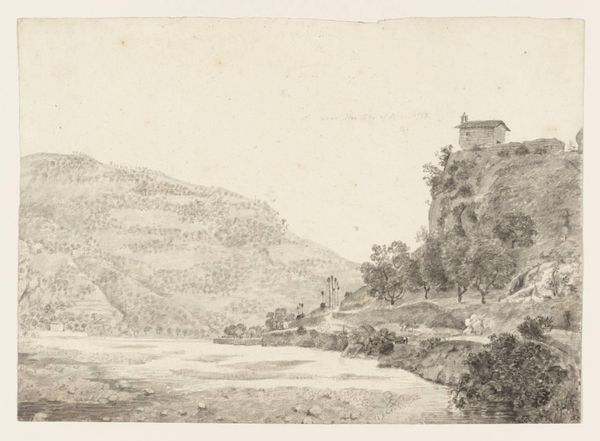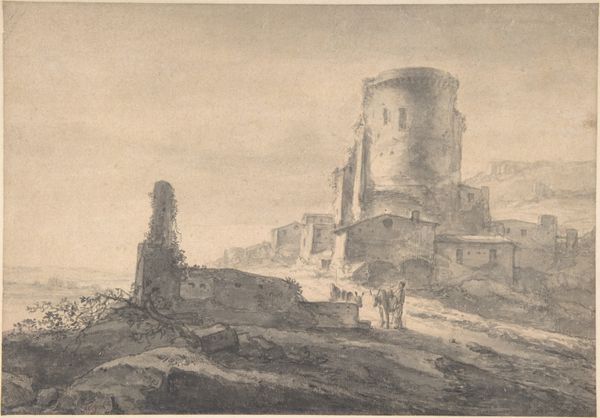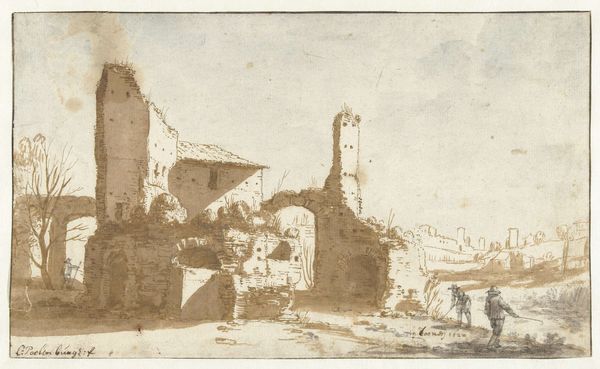
drawing, ink, pen
#
drawing
#
baroque
#
ink painting
#
landscape
#
charcoal drawing
#
ink
#
pen
#
cityscape
#
watercolor
Dimensions: 12 15/16 x 17 1/16 in. (32.8 x 43.3 cm)
Copyright: Public Domain
Editor: This is Bartholomeus Breenbergh's "View of Tivoli," dating from 1610 to 1657. It's rendered in pen and ink, and evokes such a calm, timeless feel with the cascading falls and fortress-like buildings. How would you interpret the visual symbolism at play in this drawing? Curator: It's more than just a tranquil scene. The city on the precipice embodies both security and precariousness. Notice the light: how it selectively illuminates certain facades. Consider the cultural memory of Tivoli itself – the falls were a popular destination on the Grand Tour. Do you think Breenbergh captured the city as it was or was trying to capture something else? Editor: Maybe both? It feels like a romantic ideal of a place, even though it's based on reality. It’s… staged somehow. Curator: Precisely. The waterfall and architecture themselves carry layers of symbolic weight. Water, the source of life, alongside the solid, defensive structures erected by humans, suggest a careful tension between nature and civilization. But also look at the way he chose this brown ink to unify the stones and water... almost returning the city to nature! It blurs the separation, doesn’t it? Editor: It really does. Seeing them both connected makes you wonder about our relationship with the past and nature. It is all a continuum! Curator: Indeed! And Breenbergh, consciously or not, provides a powerful reminder. Editor: This drawing opened up such a broader way of seeing the landscape – both then and now. Thank you!
Comments
No comments
Be the first to comment and join the conversation on the ultimate creative platform.
